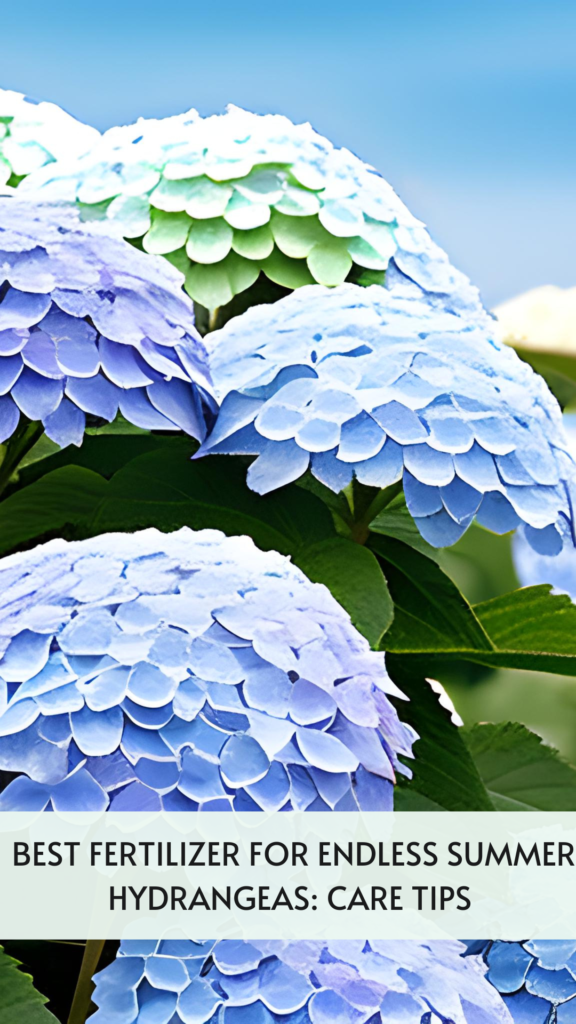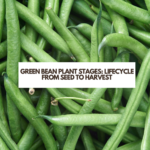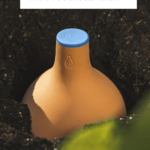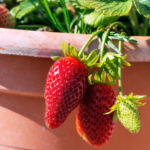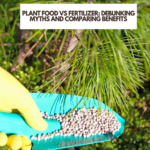Endless summer hydrangeas are a popular choice for gardeners due to their long blooming period and vibrant colors. However, to ensure that these plants thrive, it is important to choose the right fertilizer. With so many options available, it can be difficult to determine which one is the best fit for your hydrangeas.
When selecting a fertilizer for endless summer hydrangeas, it is important to consider the plant’s specific needs. These plants require a balanced blend of nutrients, including nitrogen, phosphorus, and potassium. Additionally, the soil pH level should be slightly acidic, ideally between 5.2 and 6.2. By choosing a fertilizer that is formulated to meet these requirements, gardeners can ensure that their hydrangeas receive the nutrients they need to grow and bloom to their full potential.
FTC DISCLOSURE: Some of the links in this post are affiliate links. If you click on them and make a purchase, I will receive a small finder’s fee on the sale. This does not increase your price in any way shape or form. Using these links help support the continuation of this website. All opinions are my own. Thank you in advance.
Understanding Endless Summer Hydrangeas
What are Endless Summer Hydrangeas?
Endless Summer Hydrangeas are a popular type of hydrangea that produces flowers throughout the summer season. They are a type of bigleaf hydrangeas, scientifically known as Hydrangea macrophylla, and are prized for their ability to bloom on both old and new wood.
This unique characteristic allows them to produce flowers even after harsh winters or late frosts, making them a favorite among gardeners.
Endless Summer Hydrangeas come in two main varieties: The Original and the Twist-n-Shout. The Original produces large, mophead blooms in shades of pink, blue, or purple, while the Twist-n-Shout features lacecap blooms with pink or blue centers and white edges. Both varieties are known for their vibrant colors and long bloom period.
Benefits of Endless Summer Hydrangeas
One of the main benefits of Endless Summer Hydrangeas is their extended bloom time. Unlike traditional hydrangeas that only bloom on old wood, Endless Summer Hydrangeas can bloom on both old and new wood, ensuring a continuous display of flowers throughout the summer season.
Another benefit of Endless Summer Hydrangeas is their versatility in the garden. They can be grown in containers, as a hedge, or as a specimen plant, making them a great choice for any landscape. They also prefer partial shade, making them ideal for planting under trees or in areas with dappled sunlight.
In addition to their beauty and versatility, Endless Summer Hydrangeas are also relatively easy to care for. They prefer moist, well-drained soil and benefit from regular fertilization. Speaking of fertilization, let’s take a closer look at the best fertilizers for Endless Summer Hydrangeas in the next section.
Factors Affecting Bloom Color
Soil pH and Hydrangea Color
Soil pH plays a crucial role in determining the color of hydrangea blooms. When the soil is acidic (pH below 7), hydrangeas produce blue flowers. When the soil is alkaline (pH above 7), hydrangeas produce pink flowers. White hydrangeas are not affected by soil pH.
To achieve blue hydrangea blooms, gardeners can add soil acidifiers such as aluminum sulfate or sulfur. Acidic soils lower the pH of the soil and make it more acidic, which allows the plant to absorb aluminum. The aluminum then reacts with the blue pigment in the hydrangea petals, resulting in blue flowers.
To achieve pink hydrangea blooms, gardeners can add garden lime to the soil to raise the pH and make it more alkaline. This prevents the plant from absorbing aluminum, resulting in pink flowers.
Aluminum and Hydrangea Color
Aluminum is an essential element for blue hydrangea blooms. When the soil pH is acidic, aluminum is readily available to the plant, allowing it to produce blue flowers. However, when the soil pH is too high, aluminum becomes unavailable, and the plant produces pink flowers instead.
It’s essential to note that too much aluminum can be toxic to hydrangeas, causing stunted growth and yellowing leaves. Gardeners should always follow the recommended application rates when adding aluminum sulfate or other aluminum-containing fertilizers.
You Might Also Like To Read:
Using Vinegar To Acidify Soil For Blueberries: Tips & Guide
Planting and Care Instructions
Planting Endless Summer Hydrangeas
When planting Endless Summer Hydrangeas, it’s important to choose a location with well-draining soil and partial shade. These plants prefer moist, but not waterlogged soil, and do best in areas with morning sun and afternoon shade. Dig a hole that is twice the size of the root ball, and mix in some compost or other organic matter to improve soil quality for the best results.
Watering and Sunlight
Endless Summer Hydrangeas require consistent moisture to thrive, so be sure to water them regularly. Avoid getting water on the leaves, and aim to water at the base of the plant. In terms of sunlight, these plants prefer partial shade, but can tolerate full sun in cooler climates. If you live in a hot, sunny area, it’s best to provide some afternoon shade to prevent the leaves from burning.
Fertilizing Endless Summer Hydrangeas
To keep your Endless Summer Hydrangeas healthy and blooming, it’s important to fertilize them regularly. Use a balanced fertilizer with an NPK ratio of 10-10-10 or 12-12-12. Apply the fertilizer in early spring, and again in mid-summer. Be sure to follow the instructions on the package, and avoid over-fertilizing, as this can damage the plant.
Pruning Endless Summer Hydrangeas
Endless Summer Hydrangeas bloom on both old and new wood, which means they can be pruned in either fall or early spring. If you’re looking to control the size of your plant, prune it back by up to one-third of its height. If you’re simply looking to remove dead or damaged branches, prune them back to healthy wood.
Mulching Endless Summer Hydrangeas
Mulching around your Endless Summer Hydrangeas can help to retain moisture, suppress weeds, and regulate soil temperature. Use a 2-3 inch layer of organic mulch, such as shredded leaves or bark, and be sure to keep it away from the base of the plant to prevent rot.
By following these planting and care instructions, you can help your Endless Summer Hydrangeas thrive and produce beautiful blooms year after year and increase flower production.
Remember to check the pH level of your soil and adjust it if necessary, and consider adding soil amendments to ensure your plants are getting the nutrients they need to grow.
Best Fertilizer for Endless Summer Hydrangeas
When it comes to fertilizing Endless Summer hydrangeas, it’s important to choose the right type of fertilizer to ensure healthy growth and beautiful blooms. Here are some of the best options for fertilizing your Endless Summer hydrangeas.
Granular Fertilizer
Granular fertilizers are a popular choice for hydrangeas, as they release nutrients slowly over time. Look for a granular fertilizer with a balanced NPK ratio (nitrogen, phosphorus, and potassium) of 10-10-10 or 10-6-4. Apply the granular fertilizer in early spring before new growth appears.
Slow-Release Fertilizer
Slow-release fertilizers are another great option for Endless Summer hydrangeas. These fertilizers release nutrients gradually over several months, providing a steady supply of nutrients to the plant. Look for a slow-release fertilizer with a balanced NPK ratio of 14-14-14 or 16-16-16. Apply the slow-release fertilizer in early spring or mid-summer.
Bloom Boosting Fertilizer
If you want to encourage your Endless Summer hydrangeas to produce more blooms, a bloom boosting fertilizer is the way to go. These fertilizers are high in phosphorus, which is essential for flower development. Look for a bloom boosting fertilizer with an NPK ratio of 10-30-10 or 15-30-15. Apply the bloom boosting fertilizer in early spring before new growth appears.
Balanced Fertilizer
A balanced fertilizer with an equal NPK ratio is also a good option for Endless Summer hydrangeas. This type of fertilizer provides a balanced supply of nutrients to the plant, promoting healthy growth and strong blooms. Look for a balanced fertilizer with an NPK ratio of 10-10-10 or 20-20-20. Apply the balanced fertilizer in early spring before new growth appears.
Fertilizer for Blue Blooms
If you want your Endless Summer hydrangeas to produce blue blooms, you’ll need to use a fertilizer that is low in phosphorus and high in aluminum. Look for a fertilizer specifically formulated for blue hydrangeas, with an NPK ratio of 25-5-15 or 12-4-8. Apply the fertilizer in early spring before new growth appears.
Fertilizer for Red or Pink Blooms
If you want your Endless Summer hydrangeas to produce red or pink blooms, you’ll need to use a fertilizer that is high in phosphorus and low in aluminum. Look for a fertilizer specifically formulated for pink or red hydrangeas, with an NPK ratio of 25-10-10 or 10-30-20. Apply the fertilizer in early spring before new growth appears.
When fertilizing your Endless Summer hydrangeas, it’s important to follow the instructions on the fertilizer package and not over-fertilize. Too much fertilizer can burn the roots and harm the plant. With the right fertilizer and proper care, your Endless Summer hydrangeas will thrive and produce beautiful blooms year after year.
Common Issues and Solutions
When growing Endless Summer hydrangeas, like any plant, there are some common issues that may arise. Here are some pest and disease control measures, tips for dealing with poor bloom production, and advice for reblooming hydrangeas.
Pest and Disease Control
Endless Summer hydrangeas are susceptible to a few pests and diseases, including aphids, spider mites, and powdery mildew. To control aphids and spider mites, spray the plant with a strong stream of water or use insecticidal soap. For powdery mildew, use a fungicide.
Dealing with Poor Bloom Production
If your Endless Summer hydrangea isn’t blooming as well as it should, there are a few things you can do. First, make sure the plant is getting enough sunlight. Hydrangeas need at least 4-6 hours of direct sunlight each day to bloom properly. If the plant is not getting enough sunlight, move it to a sunnier location.
Another common cause of poor bloom production is improper pruning. Endless Summer hydrangeas bloom on both old and new wood, so it’s important to prune at the right time. Prune in late winter or early spring before new growth appears. Avoid pruning in the fall, as this can remove the buds that will bloom in the following spring.
Reblooming Hydrangeas
Endless Summer hydrangeas are known for their ability to rebloom throughout the growing season. To encourage reblooming, deadhead spent blooms regularly. This will encourage the plant to produce new blooms. In addition, make sure the plant is getting enough water and nutrients. Hydrangeas prefer moist, well-drained soil and benefit from regular fertilization.
Overall, Endless Summer hydrangeas are relatively easy to care for as long as you follow these tips and keep an eye out for any pests or diseases. With proper care, you can enjoy beautiful blooms all summer long.





